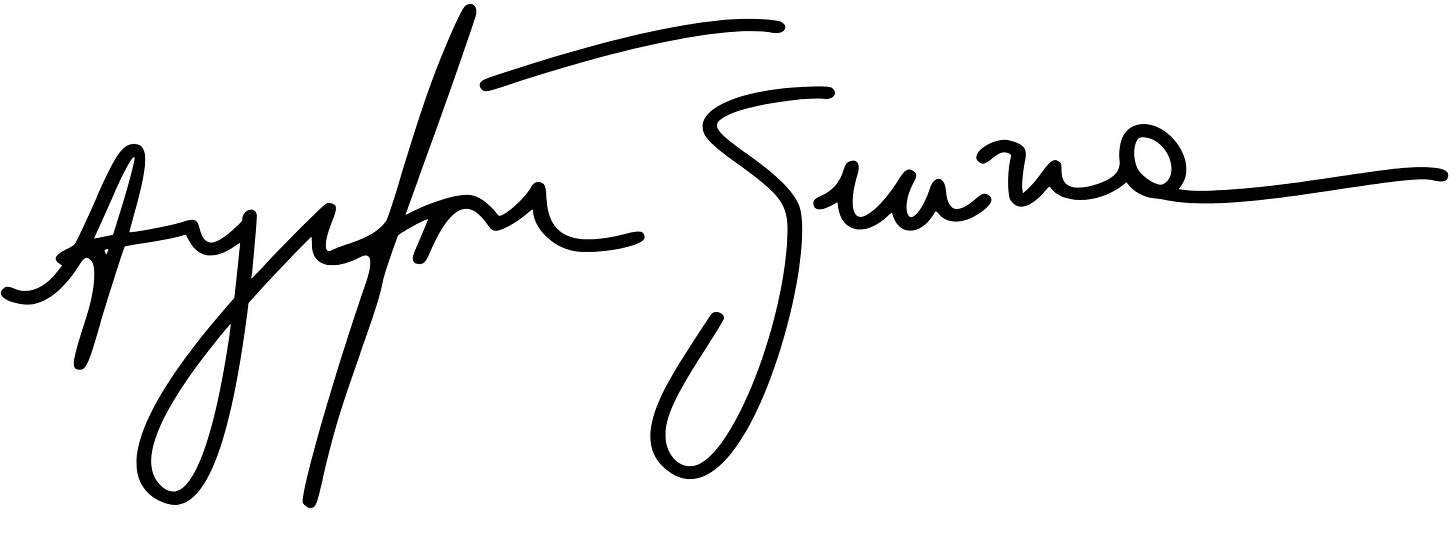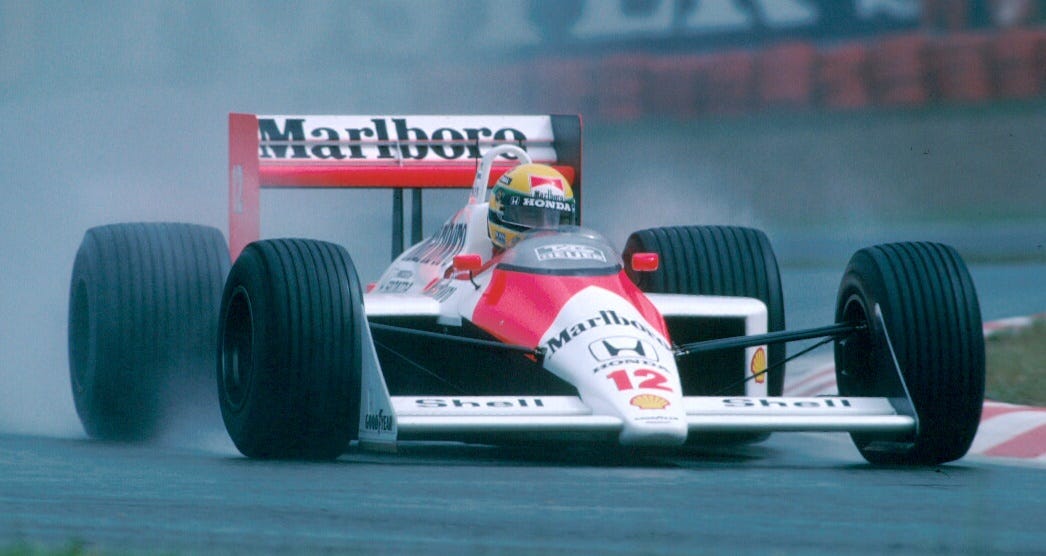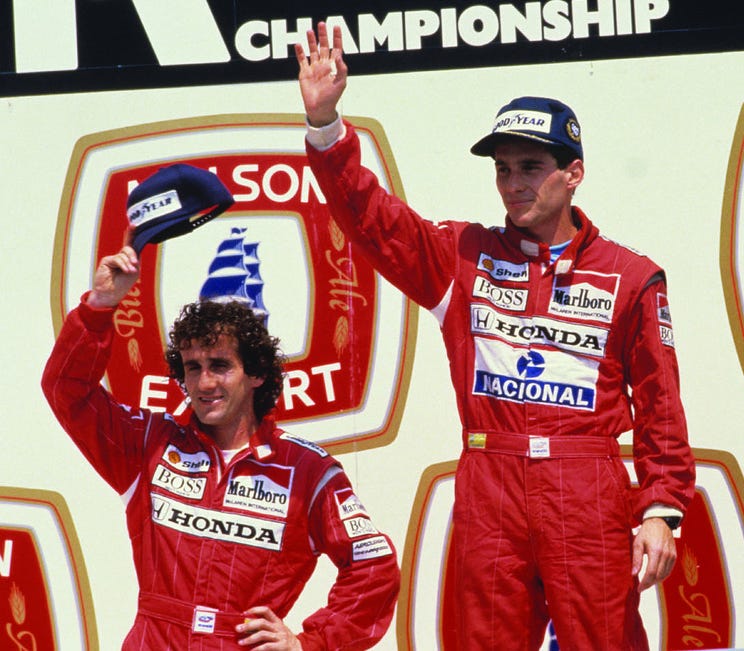The ‘Neuroscience-based Tools’, ‘Lead to Win’ & the Le Monde Élégant social skills sections are companions for The Stoic Manual to boost your stress resilience, discipline, focus, motivation, overall health, relationships, and leadership skills—by Dr. Antonius Veritas.
The Crash at Monaco
"The obstacle is the way."—Marcus Aurelius
It was the 1988 Monaco Grand Prix, and Ayrton Senna was flying.
His McLaren was perfect, hugging the tight corners of Monte Carlo like it was on rails.
He had built up a huge lead—over 50 seconds—and the race seemed like it was his.
But then, on Lap 67, at the Portier corner, everything went wrong.
A tiny mistake.
Just a split second too late on the brakes.
The car snapped sideways and smashed into the barriers with a sickening crunch.
The front of the McLaren folded like a soda can, and the car spun to a stop.
The crowd went silent.
Senna sat in the cockpit, his helmet resting against the steering wheel.
The win he had been so close to was gone, just like that.
It’s a cruel irony that the only thing faster than Senna that day was his car’s transformation into modern art.
Inside the car, Senna’s breathing became fast and shallow.
His heart was pounding so hard he could feel it in his throat.
His hands, still gripping the wheel, shook a little from the sheer frustration of it all.
His chest felt tight, like someone was sitting on it.
He wanted to scream, to punch something, but he didn’t.
He just sat there, staring at the cracked visor of his helmet.
“How could I mess this up?” he thought.
The noise of the marshals running toward him, the sound of the other cars zooming past—it all felt far away, like he was in a bubble.
He blinked hard, fighting back the tears.
Crying wasn’t going to fix anything.
So he took a deep breath and unbuckled his harness.
Senna climbed out of the car and walked away, his head held high.
But inside, he was already replaying the crash in his mind.
That night, back in his hotel room, he couldn’t sleep.
He lay in bed, staring at the ceiling, going over every second of the race.
The next morning, he was at the track before the sun came up.
He walked the circuit alone, stopping at the Portier corner.
He crouched down and touched the skid marks on the tarmac.
They say the early bird gets the worm, but Senna was after something far more elusive: redemption.
“This is where I messed up,” he said to himself.
“But it’s also where I’ll get better.”
And thus, the skid marks became not just a reminder of failure, but a roadmap to greatness.
Determined, he started practicing for the 1989 season.
Join 17,000 other readers.
The Rivalry with Prost
"You have power over your mind—not outside events. Realize this, and you will find strength."—Marcus Aurelius
The 1989 season brought a new challenge: Alain Prost, his own teammate, had become his biggest rival.
The tension between them was thick, both on and off the track.
And at the Japanese Grand Prix, it all came to a head.
Senna, desperate to catch Prost in the championship, tried a risky overtake.
The two cars collided, sending both spinning off the track.
Prost got out of his car, but Senna, with the help of marshals, managed to restart his McLaren and keep going.
He fought his way back to the front and crossed the finish line first.
But the joy didn’t last.
The FIA disqualified him for cutting the chicane, handing the championship to Prost.
Senna was furious.
It felt like the world was against him.
Senna’s hands clenched into fists so tight his nails dug into his palms.
His jaw was locked, his teeth grinding together.
He could feel the heat in his chest, spreading through his body like wildfire.
His vision blurred, not from tears, but from the sheer intensity of his anger.
“This isn’t over,” he muttered.






